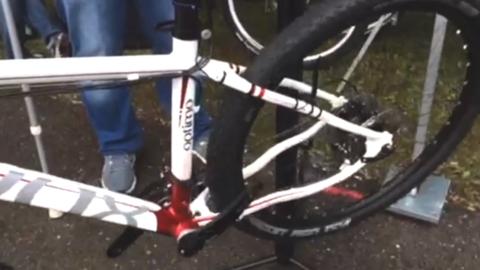UCI defends mechanical doping detection

Cycling’s governing body says it has “extremely efficient” methods of detecting motors hidden in bikes, after fresh claims of mechanical doping.
Reports claimed thermal imaging showed five motors had been hidden at two races this year.
The first top-level example of such practice was discovered at January’s under-23 cyclocross world championship.
The UCI uses magnetic resonance testing, which is “easy to deploy”.
“We have been trialling new methods of detection over the last year,” the governing body told Reuters.
“We have looked at thermal imaging, X-ray and ultrasonic testing but by far the most cost-effective, reliable and accurate method has proved to be magnetic resonance testing.
“The scanning is done with a tablet and enables an operator to test the frame and wheels of a bike in less than a minute.”
The UCI did not comment specifically on the latest claims but said it had tested 216 bikes at the Tour of Flanders and 224 at Paris-Roubaix, both of which took place this month.








